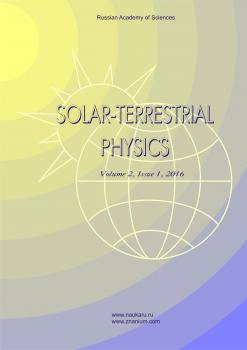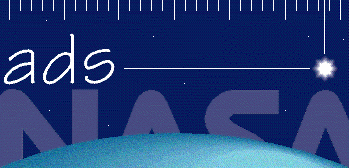Irkutsk, Russian Federation
UDK 55 Геология. Геологические и геофизические науки
Fundamentals of the spherical harmonic analysis (SHA) of the geomagnetic field were created by Gauss. They acquired the classical Chapman — Schmidt form in the first half of the XXth century. The SHA method was actively developed for domestic geomagnetology by IZMIRAN, and then, since the start of the space age, by ISTP SB RAS, where SHA became the basis for a comprehensive method of MIT (magnetogram inversion technique). SHA solves the inverse problem of potential theory and calculates sources of geomagnetic field variations (GFV) - internal and external electric currents. The SHA algorithm forms a system of linear equations (SLE), which consists of 3K equations (three components of the geomagnetic field, K is the number of ground magnetic stations). Small changes in the left and (or) right side of such SLE can lead to a significant change in unknown variables. As a result, two consecutive instants of time with almost identical GFV are approximated by significantly different SHA coefficients. This contradicts both logic and real observations of the geomagnetic field. The inherent error of magnetometers, as well as the method for determining GFV, also entails the instability of SLE solution. To solve such SLEs optimally, the method of maximum contribution (MMC) was developed at ISTP SB RAS half a century ago. This paper presents basics of the original method and proposes a number of its modifications that increase the accuracy and (or) speed of solving the SLEs. The advantage of MMC over other popular methods is shown, especially for the Southern Hemisphere of Earth.
equivalent current function, magnetogram inversion technique, spherical harmonic analysis, system of linear equation
1. Akasofu S.-I. Physics of Magnetospheric Substorms. Dordrecht, Holland, Springer, 1977, 619 p. DOI:https://doi.org/10.1007/978-94-010-1164-8.
2. Backus G., Parker R.L., Constable C. Foundations of Geomagnetism. Cambridge, UK, Cambridge University Press, 1996, 369 p.
3. Barraclough D.R. Spherical harmonic models of the geomagnetic field. Geomagn. Bull. Inst. Geol. Sci. 1978, vol. 8, pp. 1-68.
4. Bazarzhapov A.D., Matveev M.I., Mishin V.M. Geomagnitnye variatsii i buri [Geomagnetic variations and storms]. Novosibirsk, Nauka Publ., 1979, 248 p. (In Russian).
5. Bazarzhapov A.D., Mishin V.M., Nemtsova E.I., Platonov M.L. The method of analytical presentation of “instant” fields of magnetic variations. Geomagnitnye issledovaniya [Geomagnetic Res.]. 1966, no. 8, pp. 5-22. (In Russian).
6. Beklemishev D.V. Kurs analiticheskoi geometrii i lineinoi algebry [Course of Analytic Geometry and Linear Algebra]. Moscow, Vysshaya shkola, 1998, 320 p. (In Russian).
7. Benkova N.P. Spokoinye solnechno-sutochnye variatsii zemnogo magnetizma [Quiet Solar Diurnal Variations of Terrestrial Magnetism]. Leningrad, Hydrometeoizdat, 1941. 76 p. (In Russian).
8. Chapman S., Bartels J. Geomagnetism, Vol. I-II. London, Great Britain, Oxford University Press, 1940, 1049 p.
9. Faddeev D.K., Faddeeva V.N. Vychislitel’nye medody lineinoi algebry [Computational methods of linear algebra]. 2nd Ed. Moskow, Fizmatgiz, 1963, 734 p. (In Russian).
10. Fougere P.F. Spherical harmonic analysis: 1. A new method and its verification. J. Geophys. Res. 1963, vol. 68, no. 4, pp. 1131-1139. DOI:https://doi.org/10.1029/JZ068i004p01131.
11. Gauss J.C.F. Allgemeine Theorie des Erdmagnetismus. Resultate aus den Beobachtungen des Magnetischen Verein im Jahre 1838. Ed. by V.B. Werke, Leipzig, Göttinger Magnetischer Verein, 1839, pp. 119-175.
12. Gjerloev J.W. The SuperMAG data processing technique. J. Geophys. Res.: Space Phys. 2012, vol. 117, no. A9, p. A09213. DOI:https://doi.org/10.1029/2012ja017683.
13. Goldberg D. What every computer scientist should know about floating-point arithmetic. ACM Computing Surveys. 1991, vol. 23, no. 1, pp. 5-48. DOI:https://doi.org/10.1145/103162.103163.
14. Haines G.V., Torta J.M. Determination of equivalent current sources from spherical cap harmonic models of geomagnetic field variations. Geophys. J. Intern. 1994, vol. 118, no. 3, pp. 499-514. DOI:https://doi.org/10.1111/j.1365-246X.1994.tb03981.x.
15. Jacobs R.A. Increased rates of convergence through learning rate adaptation. Neural Networks. 1988, vol. 1, no. 4, pp. 295-307. DOI:https://doi.org/10.1016/0893-6080(88)90003-2.
16. Kahan W. Further remarks on reducing truncation errors. Communications of the ACM. 1965, vol. 8, no. 1. DOI: 10.1145/ 363707.363723.
17. Klein A. A Generalized Kahan-Babuška-Summation-Algorithm. Computing. 2006, vol. 76, pp. 279-293. DOI: 10.1007/ s00607-005-0139-x.
18. Lunyushkin S.B., Mishin V.V., Karavaev Y.A., Penskikh Y.V., Kapustin V.E. Studying the dynamics of electric currents and polar caps in ionospheres of two hemispheres during the August 17, 2001 geomagnetic storm. Solar-Terr. Phys. 2019, vol. 5, no. 2, pp. 15-27. DOI:https://doi.org/10.12737/stp-52201903.
19. Lunyushkin S.B., Penskikh Y.V. Diagnostics of the auroral oval boundaries on the basis of the magnetogram inversion technique. Solar-Terr. Phys. 2019, vol. 5, no. 2, pp. 88-100. DOI:https://doi.org/10.12737/stp-52201913.
20. Mandea M., Korte M. (Eds.). Geomagnetic Observations and Models, Dordrecht, Holland, Springer, 2010, 360 p. DOI:https://doi.org/10.1007/978-90-481-9858-0.
21. Mishin V.M. Spokoinye geomagnitnye variatsii i toki v magnitosfere [Quiet geomagnetic variations and currents in the magnetosphere]. Novosibirsk, Nauka Publ., 1976, 208 p. (In Russian).
22. Mishin V.M. The magnetogram inversion technique and some applications. Space Sci. Rev. 1990, vol. 53, no. 1-2, pp. 83-163. DOI:https://doi.org/10.1007/bf00217429.
23. Mishin V.M., Bazarzhapov A.D. Selection of the spectrum of Legendre polynomials approximating the observed Sq-field. Geomagnitnye issledovaniya [Geomagnetic Res.]. 1966, no. 8, pp. 23-30. (In Russian).
24. Mishin V.M., Shpynev G.B., Bazarshapov A.D. Computation of electric field and currents in the Earth`s magnetosphere on a continuous basis by means of ground geomagnetic measurements. Issledovaniya po geomagnetizmu, aeronomii i fizike Solntsa [Res. on Geomagnetism, Aeronomy and Solar Phys.]. 1982, no. 58, pp. 178-186. (In Russian).
25. Mishin V.M., Bazarzhapov A.D., Shpynev G.B. Mathematical analysis of the field of geomagnetic variations. Geomagnetizm i aeronomiya [Geomagnetism and Aeronomy]. 1984, vol. 24, no. 1, pp. 160-162. (In Russian).
26. Mishin V.M., Mishin V.V., Lunyushkin S.B., Wang J.Y., Moiseev A.V. 27 August 2001 substorm: Preonset phenomena, two main onsets, field-aligned current systems, and plasma flow channels in the ionosphere and in the magnetosphere. J. Geophys. Res.: Space Phys. 2017, vol. 122, no. 5, pp. 4988-5007. DOI:https://doi.org/10.1002/2017ja023915.
27. Olsen N., Glassmeier K.H., Jia X. Separation of the magnetic field into external and internal parts. Space Sci. Rev. 2010, vol. 152, no. 1-4, pp. 135-157. DOI:https://doi.org/10.1007/s11214-009-9563-0.
28. Pulkkinen A., Amm O., Viljanen A., BEAR working group. Separation of the geomagnetic variation field on the ground into external and internal parts using the spherical elementary current system method. Earth, Planets and Space. 2003, vol. 55, no. 3, pp. 117-129. DOI:https://doi.org/10.1186/BF03351739.
29. Rangarajan G.K., Rao D.R.K. A Fortran computer programme for spherical harmonic analysis of geomagnetic field by numerical integration. Proc. Indian Acad. Sci. 1975, vol. 82, no. 6, pp. 236-244. DOI:https://doi.org/10.1007/bf03046733.
30. Schmidt A. Tafeln der Normierten Kugelfunktionen. Gotha, Engelhard-Reyher, 1935. 52 p.
31. Schuster A., Lamb H. The diurnal variation of terrestrial magnetism. Phil. Trans. R. Soc. Lond. A. 1889, vol. 180, pp. 467-518. DOI:https://doi.org/10.1098/rsta.1889.0015.
32. Shirapov D.S., Mishin V.M. Modeling of the global electrodynamic processes in the geomagnetosphere. Ulan-Ude, East Siberian State Technological University, 2009, 217 p. (In Russian).
33. Shirapov D.S., Mishin V.M., Bazarshapov A.D., Saifudinova T.I. An improved version of the magnetogram inversion technique, and its application to the problem of the open magnetic flux dynamics in the geomagnetospheric tail. Issledovaniya po geomagnetizmu, aeronomii i fizike Solntsa [Res. on Geomagnetism, Aeronomy and Solar Phys.]. 2000, no. 111, pp. 154-172. (In Russian).
34. Shpynev G.B., Bazarshapov A.D., Mishin V.M. Selection of the optimal spectrum for approximating functions at analytical representation of experimental data. Issledovaniya po geomagnetizmu, aeronomii i fizike Solntsa [Res. on Geomagnetism, Aeronomy and Solar Phys.]. 1974, no. 32, pp. 60-65. (In Russian).
35. Sneeuw N. Global spherical harmonic analysis by least-squares and numerical quadrature methods in historical perspective. Geophys. J. Intern. 1994, vol. 118, no. 3, pp. 707-716. DOI:https://doi.org/10.1111/j.1365-246X.1994.tb03995.x.
36. Tikhonov A.N., Arsenin V.Y. Solution methods for incorrect problems. Moscow, Nauka Publ, 1979, 284 p. (In Russian).
37. Weimer D.R. Models of high-latitude electric potentials derived with a least error fit of spherical harmonic coefficients. J. Geophys. Res.: Space Phys. 1995, vol. 100, no. A10, pp. 19595-19607. DOI:https://doi.org/10.1029/95ja01755.
38. Yanovsky B.M. Zemnoi magnetism [Terrestrial Magnetism]. Leningrad, 1978, 592 p. (In Russian).

















